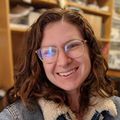Integrative Analysis of Single-Cell Combinatorial Long-Read RNA-seq and Single-Cell ATAC-seq in Myogenesis
Alternative RNA isoforms are defined by promoter choice, alternative splicing, and polyA site selection. Although differential isoform expression is known to play a large regulatory role in eukaryotes, it has proved challenging to study with standard short-read RNA-seq because of uncertainties it leaves about the full-length structure and precise termini of transcripts. The rise in throughput and quality of long-read sequencing now offers the possibility to unambiguously identify most transcript isoforms from beginning to end. However, the application of long-read sequencing to single-cell RNA-seq in particular remains limited by low throughput and high expense. Here, we develop and characterize long-read Split-seq (LR-Split-seq), which utilizes a combinatorial barcoding-based method for sequencing single cells and nuclei with long reads. We demonstrate that LR-Split-seq can associate isoforms to cell types with relative economy. We characterize LR-Split-seq for whole cells and nuclei by using the well-studied mouse C2C12 system in which mononucleated myoblast cells differentiate and fuse into multinucleated myotubes. We show that the overall results are consistent with existing knowledge of the system and are reproducible when comparing long- and short-read data from the same cell or nuclear samples. We find substantial evidence of differential isoform expression during differentiation including alternative transcription start site (TSS) usage. Moreover, we validate our known and novel isoforms by integration of isoform expression dynamics with snATAC-seq chromatin accessibility at their TSSs. LR-Split-seq provides an affordable method for identifying cluster-specific isoforms in single cells that can be matched to short-read sequencing of an expanded pool of the same cells as well as integrated with additional single-cell omics data modalities.
Learning Objectives:
1. Demonstrate the utility of long-read RNA-sequencing in studying alternative isoforms
2. Define the long-Split-seq approach to profiling the transcriptomes of single-cells




